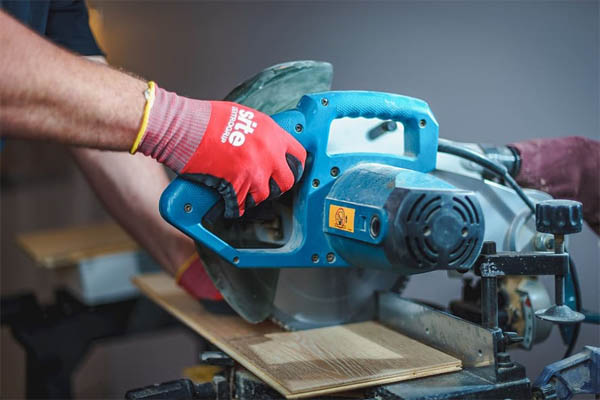Type of Electric Saws: A Comprehensive Guide
An electric saw is a power tool that utilizes electricity to generate mechanical energy, allowing it to cut through various materials such as wood, metal, plastic, or masonry.
Unlike manual saws that require physical effort to operate, electric saws use an electric motor to power the blade’s movement, making the cutting process faster, more efficient, and precise.
Electric saws come in different types, each designed for specific applications, ranging from woodworking to construction and DIY projects.
These saws are widely used in various industries and are essential tools for professionals and hobbyists alike.
In this comprehensive guide, we will explore the diverse world of electric saws.
Overview of Electric Saws
Electric saws have come a long way since their invention, offering significant advantages over traditional manual saws.
Their power, speed, and accuracy make them essential tools for professionals and hobbyists alike.
These tools typically consist of components like a motor, blade, handle, and safety features, all designed to enhance user experience and safety.
Classification of Electric Saws
A. Based on Power Source
- Corded Electric Saws: These saws are powered through an electrical cord, providing consistent power for prolonged use.
- Cordless (Battery-Powered) Electric Saws: Offering portability and convenience, these saws operate on rechargeable batteries, making them ideal for outdoor projects and job sites without easy access to power outlets.
B. Based on Functionality
- Circular Saws: Perfect for straight cuts in various materials, circular saws are a common choice in woodworking and construction.
- Jigsaw: Known for their ability to make intricate curved cuts, jigsaws are essential for artistic and detailed projects.
- Reciprocating Saws: Designed for demolition work, these saws excel at cutting through materials like metal, plastic, and wood.
- Miter Saws: Ideal for precise angle cuts, miter saws find extensive use in carpentry and framing projects.
- Table Saws: Large-scale woodworking projects benefit from table saws, offering stability and accuracy for long, straight cuts.
- Chainsaws: Specifically used for cutting trees and branches, chainsaws are crucial tools in forestry and landscaping.
C. Specialized Electric Saws
- Concrete Saws: Equipped with robust blades, these saws cut through concrete and masonry, essential in construction and renovation.
- Tile Saws: Designed for cutting tiles, these saws ensure clean and precise cuts in ceramic, porcelain, and stone tiles.
- Metal-Cutting Saws: Specialized saws for cutting metal sheets, pipes, and profiles accurately and efficiently.
In-Depth Discussion of Each Type
A. Circular Saws
Circular saws are versatile tools used for straight cuts in various materials such as wood, plastic, and metal.
Their handheld design allows for flexibility, making them a favorite among carpenters and DIY enthusiasts.
To operate safely, users must wear appropriate safety gear, including goggles and hearing protection, and follow the manufacturer’s guidelines.
B. Jigsaw
Jigsaws are the artists’ choice, allowing for intricate curves and shapes in wood, metal, and plastic.
Their fine blades and maneuverability make them perfect for detailed woodworking projects and creative designs.
Safety precautions include securing the material and wearing gloves to prevent accidents.
C. Reciprocating Saws
Reciprocating saws are the workhorses of construction and demolition, capable of cutting through almost anything, including nails and pipes.
Their powerful blades move back and forth rapidly, making them indispensable on construction sites.
Safety measures include a firm grip, proper balance, and understanding the material being cut to prevent kickback.
D. Miter Saws
Miter saws are essential for accurate angle cuts, commonly used in framing, molding, and trim work.
Proper calibration and securing the material are crucial to achieve precise cuts. Additionally, users should wear safety gloves and eyewear to protect against debris.
E. Table Saws
Table saws are the heart of many woodworking shops, providing stability and precision for long, straight cuts.
Safety features such as blade guards, anti-kickback pawls, and riving knives are essential to prevent accidents.
Users must follow safety guidelines and maintain the saw regularly for optimal performance.
Conclusion
Electric saws have transformed the way we approach cutting tasks, offering efficiency, precision, and versatility.
By understanding the various types of electric saws, their applications, and following strict safety guidelines, users can harness the full potential of these powerful tools.
As technology continues to advance, the world of electric saws will undoubtedly see further innovations, making these tools even more accessible and user-friendly.
Embracing this technology responsibly ensures both the efficiency of work and the safety of those who operate these remarkable machines.
So, equip yourself with knowledge, wear your safety gear, and let the electric saws help you craft, build, and create with unparalleled precision and ease.

Don Kerr spent many years honing his skills as a DIY woodworker. He finds immense joy in not only creating remarkable pieces but also in generously sharing his knowledge. Connect with him via group.



